
Professor
Julio Cesar Lombaldo Fernandes
Professor Universitário de Matemática Aplicada
julio.lombaldo@ufrgs.br
Artigos e Capítulos de Livros
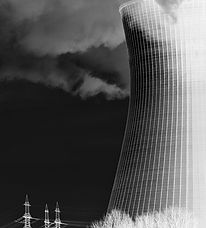
On an analytical solution for the two energy group neutron space-kinetic equation in heterogeneous cylindrical geometry
Annals of Nuclear Energy, November 2019
Abstract: The present work is a continuation for the multigroup scalar neutron flux and multigroup precursor concentration model, here two energy groups and one delayed neutron precursor concentration. We determine a general solution for this problem considering cylinder geometry. The solution is determined using variable separation. The complete spectrum is analysed with respect to each variable separation and truncated such as to allow a parametrisation of the solution for the considered homogeneous problem. For a specific choice of nuclear parameter we present the three dimensional solution for the fast, the thermal angular neutron fluxes and the delayed neutron precursor concentration. Possible extensions of the model and solutions are indicated.
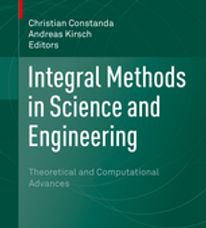
On the Radiative Conductive Transfer Equation: A Heuristic Convergence Criterion by Stability Analysis
Integral Methods in Science and Engineering, September 2017
Abstract: Recently, the radiative conductive transfer equation in cylinder geometry was solved in semi-analytical fashion by the collocation method in both angular variables, using the SN procedure. Upon application of the decomposition method the resulting recursive system of SN radiative transfer equations was evaluated by the Laplace transform technique considering the non-linear term as source. In the present work we prove a heuristic convergence of the discussed solution inspired by stability analysis criteria and taking into account the influence of the parameter sets. Finally, we report on some case studies with numerical results for the solutions and convergence behaviour.
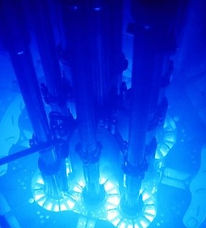
On multi-group neutron transport in planar one dimensional geometry: A solution for a localized pulsed source
Annals of Nuclear Energy, March 2017
Abstract: In this work we present a solution for the multi-group neutron transport equation in planar one dimensional geometry. As an application we consider a scenario with a localized pulsed source. The basic idea of this work consists in constructing a recursive system of equations leading to an analytical representation for the multi-energy group solution. The error control is obtained by properly choosing the recursion depth of the equation system. The authors also present an analysis of stability for the results of the recursive system. Numerical simulations are reported for a problem with pulsed neutron source..
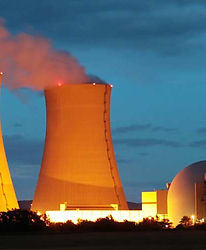
On a comparative analysis of the solutions of the kinetic neutron diffusion equation by the Hankel transform formalism and the spectral method
Progress Nuclear Energy, May 2013
Abstract: In the present work we discuss the kinetic neutron diffusion equation in homogeneous cylinder geometry. We construct solutions unaffected by a numerical artifact, known as stiffness of the equation system, for two energy groups, one and six precursor concentrations, respectively. Upon applying the Hankel transform in the diffusion equation one obtains a generalized system for the fast and thermal, and the precursor concentrations of delayed neutrons. The Hankel Transform together with the Parseval identity indicate a natural orthogonal basis that is convenient to expand solutions for extended problems in zero order Bessel functions. A direct comparison of results obtained by integral transform techniques against the results from spectral theory validate this procedure. We show numerical results for the one precursor group case as well as the six precursor group case and show consistency of the results.

On the Build-Up Factor from the Multi-Group Neutron Diffusion Equation with Cylindrical Symmetry
World Journal of Nuclear Science and Technology, January 2013
Abstract: We consider the time dependent neutron diffusion equation for one energy group in cylinder coordinates, assuming translational symmetry along the cylinder axis. This problem for a specific energy group is solved analytically applying the Hankel transform in the radial coordinate r. Our special interest rests in the build-up factor for a time dependent linear neutron source aligned with the cylinder axis, which in the limit of zero decay constant reproduces also the static case. The new approach to solve the diffusion equation by integral transform technique is presented and results for several parameter sets and truncation in the solution for the flux and build-up factor are shown and found to be compatible to those of literature .
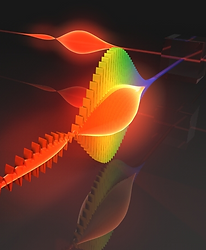
A Closed-Form Formulation for the Build-Up Factor and Absorbed Energy for Photons and Electrons in the Compton Energy Range in Cartesian Geometry
World Journal of Nuclear Science and Technology, January 2012
Abstract: In this work, we report on a closed-form formulation for the build-up factor and absorbed energy, in one and two di- mensional Cartesian geometry for photons and electrons, in the Compton energy range. For the one-dimensional case we use the LTSN method, assuming the Klein-Nishina scattering kernel for the determination of the angular radiation intensity for photons. We apply the two-dimensional LTSN nodal solution for the averaged angular radiation evaluation for the two-dimensional case, using the Klein-Nishina kernel for photons and the Compton kernel for electrons. From the angular radiation intensity we construct a closed-form solution for the build-up factor and evaluate the absorbed energy. We present numerical simulations and comparisons against results from the literature.

Multi-Group Neutron Propagation in Transport Theory by Space Asymptotic Methods.
Integral Methods in Science and Engineering. 12ed. Heidelbrg: Springer, 2015, v. 12, p. 223-234
Abstract: The study of the neutronic response to a localized pulsed source requires accurate models, due to the strong spatial effects coming into play associated with the wavefront propagation. Furthermore, usually neutron sources inject particles at high energy and, consequently, important spectral effects may come into play. In previous works, the propagation phenomenon has been investigated for idealized configurations in exact transport (Dulla et al., Annals of Nuclear Energy C 33:932–940, 2006), restricting the analysis to one-group problems. Furthermore, the numerical effects associated with the application of discrete ordinate and spherical harmonics methods have been analyzed (Dulla and Ravetto, Transactions of the American Nuclear Society C 90:278–280, 2004; Annals of Nuclear Energy C 35:656–664, 2008), illustrating the appearance of time-dependent ray effects.

The Multi-Group Neutron Diffusion Equation in General Geometries Using the Parseval Identity.
Integral Methods in Science and Engineering. 12ed.Heidelberg: Springer, 2015, v. 12, p. 209-221
Abstract: Multi-group neutron diffusion equation is still one of the most frequently employed equations for nuclear reactor neutronics calculations, although its limitations are well known. The equation is obtained under the assumptions that scattering is isotropic in the laboratory coordinate system and the region of interest is considered piecewise homogeneous, so that the diffusion coefficients are invariant under spatial transforms like translation and others. It is well known, that such a derivation of diffusion theory rests on certain assumptions, i.e. the flux being sufficiently smooth especially by virtue of neutron absorption or production, which is reasonable since the mean free path is typically larger than the dimensions of the fuel cell and moderator space geometry. The solution of the diffusion equation system is obtained by Parseval relation for different kinds of geometry, where fluctuations (higher moments) are neglected. Further, the continuous energy distribution of neutrons is reduced by the use of two energy groups and the results was compared to literature.

A Novel Approach to the Hankel Transform Inversion of the Neutron Diffusion Problem Using the Parseval Identity.
Integral Methods in Science and Engineering. 1ed.: Birkhauser, 2013, v. 22, p. 105-114
Abstract: In this work a novel approach to solve neutron diffusion problems in cylindrical geometry is presented. The analytical expression derived represents an accurate solution to an approximate problem for the multi-group steady state and multi-region diffusion equation in cylinder coordinates. The Parseval identity is shown to be an efficient technique to solve this type of problem.